Abraham Wald
description: Hungarian mathematician, contributions to decision theory and statistical quality control
29 results
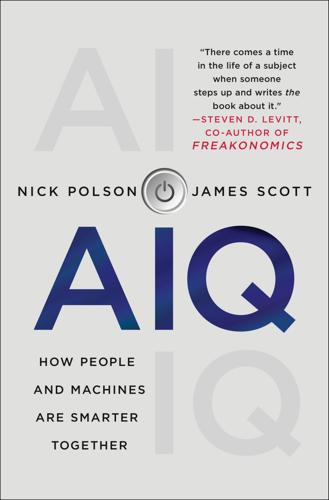
AIQ: How People and Machines Are Smarter Together
by
Nick Polson
and
James Scott
Published 14 May 2018
Material on the life of Abraham Wald was drawn from the following sources: W. Allen Wallis, “The Statistical Research Group, 1942–1945,” Journal of the American Statistical Association 75, no. 370 (June 1980): 320–30; Marc Mangel and Francisco J. Samaniego, “Abraham Wald’s Work on Aircraft Survivability,” Journal of the American Statistical Association 79, no. 386 (June 1984): 259–67, and see also “Comment” by James O. Berger (267–69) and “Rejoinder” by the authors (270–71); J. Wolfowitz, “Abraham Wald, 1902–1950,” Annals of Mathematical Statistics 23, no. 1 (1952): 1–13; Oskar Morgenstern, “Abraham Wald, 1902–1950,” Econometrica 19, no. 4 (Oct. 1951): 361–67; Karl Menger, “The Formative Years of Abraham Wald and His Work in Geometry,” Annals of Mathematical Statistics 23, no. 1 (1952): 14–20; L.
…
But in the face of these bleak odds, the bomber crews had at least three defenses. 1. Their own tail and turret gunners, to ward off attackers. 2. Their fighter escorts: the Spitfires and P-51 Mustangs sent along to defend the bombers from the Luftwaffe. 3. A Hungarian-American statistician named Abraham Wald. Abraham Wald never shot down a Messerschmitt or even saw the inside of a combat aircraft. Nonetheless, he made an outsized contribution to the Allied war effort using an equally potent weapon: conditional probability. Specifically, Wald built a recommender system that could make personalized survivability suggestions for different kinds of planes.
…
Wolfowitz, “Abraham Wald, 1902–1950,” Annals of Mathematical Statistics 23, no. 1 (1952): 1–13; Oskar Morgenstern, “Abraham Wald, 1902–1950,” Econometrica 19, no. 4 (Oct. 1951): 361–67; Karl Menger, “The Formative Years of Abraham Wald and His Work in Geometry,” Annals of Mathematical Statistics 23, no. 1 (1952): 14–20; L. Weiss, “Wald, Abraham,” in Leading Personalities in Statistical Sciences: From the Seventeenth Century to the Present, ed. Norman L. Johnson and Samuel Kotz (New York: John Wiley & Sons, 1997), 164–67; “Abraham Wald,” MacTutor History of Mathematics, http://www-history.mcs.st-andrews.ac.uk/Biographies/Wald.html. 5. W. Allen Wallis, “The Statistical Research Group, 1942–1945,” Journal of the American Statistical Association 75, no. 370 (June 1980): 320–30. 6.

Black Box Thinking: Why Most People Never Learn From Their Mistakes--But Some Do
by
Matthew Syed
Published 3 Nov 2015
Oskar Morgenstern, Abraham Wald obituary, Econometrica, October 1951. 10. H. Freeman, “Abraham Wald,” in D. L. Sills (ed.), International Encyclopedia of Social Sciences, 16 (1968), 435–38. 11. Karl Menger, “The Formative Years of Abraham Wald and His Work in Geometry,” in Annals of Mathematical Statistics 23, no. 1 (1952): 14–20. 12. http://youarenotsosmart.com/tag/abraham-wald/. 13. Ibid. 14. Ibid. 15. https://hbr.org/2011/04/strategies-for-learning-from-failure. 16. http://cna.org/sites/default/files/research/0204320000.pdf. 17. Oskar Morgenstern, Abraham Wald obituary.
…
Practice is not a substitute for learning from real-world failure; it is complementary to it. They are, in many ways, two sides of the same coin. With this in mind, let us take one final example of a “black-box-style investigation.” It involved the losses of bomber aircraft during World War II and was conducted by one of the most brilliant mathematicians of the twentieth century: Abraham Wald. His analysis was not just a pivotal moment in a major conflict, but also an important example within the context of this book. Learning from adverse events can sometimes look easy with the benefit of hindsight. Weren’t the lessons from United Airlines 173, for example, just obvious? Didn’t they jump out of the data?
…
His work was classified for decades, but the full story, and how it contributed to the defeat of Nazism, has recently been told. Most of all his investigations reveal that in order to learn from failure, you have to take into account not merely the data you can see, but also the data you can’t. III Abraham Wald was born in Hungary in 1902 to a Jewish baker. He was educated at home by his older brother, Martin, who was a qualified engineer. Early on he developed a love for mathematics and, at the age of fourteen, geometry. According to those who knew him, little Abraham was always creating and solving puzzles.
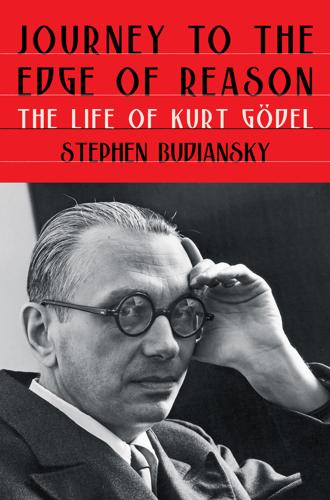
Journey to the Edge of Reason: The Life of Kurt Gödel
by
Stephen Budiansky
Published 10 May 2021
No notes of his Washington talk survive. 37.Siegmund-Schultze, Mathematicians Fleeing Nazi Germany, 244. 38.Abraham Flexner to KG, 7 March 1934, IAS, Faculty Files, Pre-1953. 39.GA, 51. 40.Sigmund, Exact Thinking, 291–92, 296; Menger, Reminiscences, 214. 41.Menger, Reminiscences, 211, 213. 42.Menger, Reminiscences, 211–12; Feferman and Feferman, Tarski, 81–82. 43.Feferman and Feferman, Tarski, 12, 19, 37–39, 53. 44.Feferman and Feferman, Tarski, 5, 84–85, 144–45. 45.Karl Menger quoted in Sigmund, Exact Thinking, 230; Morgenstern, “Abraham Wald,” 361–62; OMD, 6 June 1936. 46.Menger, Reminiscences, 212–13; Morgenstern, “Abraham Wald,” 363. 47.Menger, Reminiscences, 214. 48.Menger, Reminiscences, 216. 49.Kreisel, “Kurt Gödel,” 154. 50.KG to Oswald Veblen, 1 January 1935, Veblen, Papers, 6/5. 51.Topp, “Hoffmann’s Purkersdorf.” 52.KG to MG, 28 July 1946. 53.Kreisel, “Kurt Gödel,” 154; Dr.
…
Menger recalled: Towards the end of 1929 I also invited Gödel to the Colloquium and from then on he was a regular participant, not missing a single meeting when he was in Vienna and in good health. From the beginning he appeared to enjoy these gatherings and spoke even outside of them with members of the group, particularly with Georg Nöbeling, sometimes with Franz Alt and Olga Taussky, when she was in Vienna, and later on frequently with Abraham Wald and foreign visitors. He was a spirited participant in discussions on a large variety of topics. Orally, as well as in writing, he always expressed himself with the greatest precision and at the same time with the utmost brevity. In nonmathematical conversations he was very withdrawn.39 Olga Taussky also found him cautious to the point of withdrawal in ordinary social situations.
…
But his affection for Gödel, and later his wife Adele, was genuine and sincere, based on their shared background and zeal for ideas as well as their unspoken competitiveness. Tarski was one of the very few friends whom Gödel ever addressed in his letters using the informal pronoun Du.44 Gödel’s other deepening professional friendship that year was with Abraham Wald. The son of an Orthodox Jewish baker, he had been educated at home because his family refused to allow him to attend the local public schools in Hungary, which required going to class on Saturday, the Jewish sabbath. Taking up mathematics at a late age, he had been one of Menger’s most able students, earning his doctorate in three semesters.

The Data Detective: Ten Easy Rules to Make Sense of Statistics
by
Tim Harford
Published 2 Feb 2021
Nicole Lyn Pesce, “Ten Kickstarter Products That Raised the Most Money,” MarketWatch, June 22, 2017, https://www.marketwatch.com/story/10-kickstarter-products-that-raised-the-most-money-2017-06-22-10883052. 5. The story is well told in Jordan Ellenberg’s book How Not to Be Wrong (New York: Penguin, 2014), with the relevant extract here: “Abraham Wald and the Missing Bullet Holes,” Medium, July 14, 2016, https://medium.com/@penguinpress/an-excerpt-from-how-not-to-be-wrong-by-jordan-ellenberg-664e708cfc3d. 6. A technical summary (along with some grumbling about how the story has been exaggerated) is in Bill Casselman, “The Legend of Abraham Wald,” American Mathematical Society, http://www.ams.org/publicoutreach/feature-column/fc-2016-06. 7. An excellent account of the controversy is Daniel Engber, “Daryl Bem Proved ESP Is Real Which Means Science Is Broken,” Slate, May 17, 2017, https://slate.com/health-and-science/2017/06/daryl-bem-proved-esp-is-real-showed-science-is-broken.html. 8.
…
Even though statisticians understand this problem perfectly well, there’s no easy way to solve it without systematic testing. And in the early stages of the pandemic, when the most difficult policy decisions were being made, systematic testing was elusive. There’s a famous story about the mathematician Abraham Wald, who was asked in 1943 to advise the US Air Force on how to reinforce its planes. The planes were returning from sorties peppered with bullet holes in the fuselage and wings; surely those spots could use some armor plating? Wald’s written response was highly technical, but the key idea is this: We observe damage only in the planes that return.
…
That might be because those areas are rarely hit—or it might be that whenever those areas are hit, the plane is doomed. If we look only at the surviving planes—falling prey to “survivorship bias”—we’ll completely misunderstand where the real vulnerabilities are.5 The rabbit hole goes deeper. Even the story about survivorship bias is an example of survivorship bias; it bears little resemblance to what Abraham Wald actually did, which was to produce a research document full of complex technical analysis. That is largely forgotten. What survives is the tale about a mathematician’s flash of insight, with some vivid details added. What originally existed and what survives will rarely be the same thing.6 Kickended, then, provides an essential counterpoint to the breathless accounts of smash hits on Kickstarter.
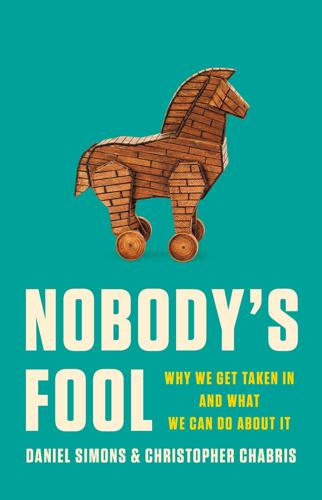
Nobody's Fool: Why We Get Taken in and What We Can Do About It
by
Daniel Simons
and
Christopher Chabris
Published 10 Jul 2023
In addition to becoming a Twitter meme, it has been discussed in several recent popular science books, including Jordan Ellenberg’s excellent book about statistical thinking, How Not to Be Wrong: The Power of Mathematical Thinking (New York: Penguin, 2014). The details of the Wald story, along with the iconic plane image, are described well in the Wikipedia article “Abraham Wald” [https://en.wikipedia.org/wiki/Abraham_Wald]; details about Black Thursday can also be found at “Boeing B-17 Flying Fortress,” Wikipedia [https://en.wikipedia.org/wiki/Boeing_B-17_Flying_Fortress]. 10. Dave Rubin’s tweet, November 12, 2021 [https://twitter.com/RubinReport/status/1459163836905234437]. 11. M. Gladwell, The Tipping Point: How Little Things Can Make a Big Difference (Boston: Little, Brown, 2000).
…
But perhaps parts of the planes could be reinforced. If the damage to the planes was random, there would be little benefit. But if the damage was systematic, affecting some parts more than others, then the army could fix the vulnerable sections, strengthen the planes, and possibly end the war sooner. To help with this problem, the army found Abraham Wald, a Romanian-born statistician working with the Statistical Research Group at Columbia University. Wald’s work remains influential, with some of the statistical techniques he developed commonly used in psychology, economics, and other disciplines today. At the time, he was developing methods in the field of “survival analysis,” and he conducted a systematic study of the damage to B-17 planes.
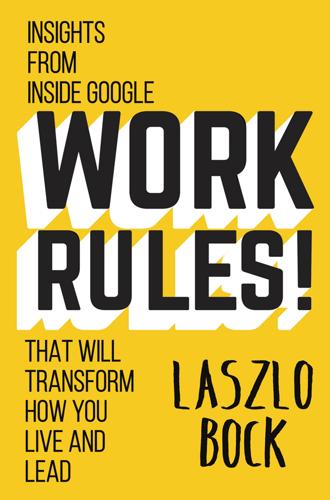
Work Rules!: Insights From Inside Google That Will Transform How You Live and Lead
by
Laszlo Bock
Published 31 Mar 2015
For example, see works by Alex Haslam (University of Queensland) and Stephen Reicher (University of St. Andrews). 99. Richard Norton Smith, “Ron Nessen,” Gerald R. Ford Oral History Project, http://geraldrfordfoundation.org/centennial/oralhistory/ron-nessen/. 100. “SciTech Tuesday: Abraham Wald, Seeing the Unseen,” post by Annie Tete, STEM Education Coordinator at the National World War II Museum, See & Hear (museum blog), November 13, 2012, http://www.nww2m.com/2012/11/scitech-tuesday-abraham-wald-seeing-the-unseen/. A reprint of Wald’s work can be found here: http://cna.org/sites/default/files/research/0204320000.pdf. 101. “Lawyercat” is Googler-speak for the hardworking and vigilant Googlers in our legal function.
…
xxxvii “If it’s raining, will you get wetter by running or walking?”xxxviii ). Inspired by the show, we try to test myths within the company and debunk them wherever we can. People make all kinds of assumptions—guesses, really—about how things work in organizations. Most of these guesses are rooted in sample bias. A textbook illustration of sample bias is Abraham Wald’s work in World War II. Wald, a Hungarian mathematician, was a member of the Statistical Research Group (a group based at Columbia University that took on statistical assignments from the US government during the war). He was asked what the military could do to improve the survival rates for bombers.

Prediction Machines: The Simple Economics of Artificial Intelligence
by
Ajay Agrawal
,
Joshua Gans
and
Avi Goldfarb
Published 16 Apr 2018
Pilots would lose their lives. For every bomber that returned from bombing raids over Germany, the engineers could see where they had been hit by antiaircraft fire. The bullet holes in the planes were their data. But were these the obvious places to better protect the plane? They asked statistician Abraham Wald to assess the problem. After some thought and some rather thorough mathematics, he told them to protect the places without bullet holes. Was he confused? That seemed counterintuitive. Didn’t he mean to protect the areas of the plane that did have bullet holes? No. He had a model of the process that generated the data.
…
Ellen Huet, “The Humans Hiding Behind the Chatbots,” Bloomberg, April 18, 2016, https://www.bloomberg.com/news/articles/2016-04-18/the-humans-hiding-behind-the-chatbots. 5. Wakabayashi, “Meet the People Who Train the Robots (to Do Their Own Jobs).” 6. Marc Mangel and Francisco J. Samaniego, “Abraham Wald’s Work on Aircraft Survivability,” Journal of the American Statistical Association 79, no. 386 (1984): 259–267. 7. Bart J. Bronnenberg, Peter E. Rossi, and Naufel J. Vilcassim, “Structural Modeling and Policy Simulation,” Journal of Marketing Research 42, no. 1 (2005): 22–26, http://journals.ama.org/doi/abs/10.1509/jmkr.42.1.22.56887. 8.
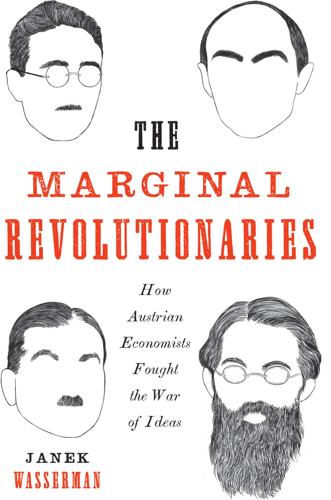
The Marginal Revolutionaries: How Austrian Economists Fought the War of Ideas
by
Janek Wasserman
Published 23 Sep 2019
Under his leadership, the institute took advantage of the remaining interwar Viennese circles to enrich its approach, drawing into its discussions world-class philosophers and mathematicians. Morgenstern won commissions from the League of Nations, the ICC, and the Bank for International Settlements. Spending more time with Karl Menger and his Mathematical Colloquium—where one could hear presentations not only from Menger but also from Abraham Wald, Kurt Gödel, Werner Heisenberg, Alfred Tarski, and Rudolf Carnap—Morgenstern took an interest in modern mathematics and its potential for improving economic theory. After Mises’s departure in 1934, Morgenstern reshaped the school’s seminar, inviting more contributions from mathematicians. He also turned away from the “Austroliberal” approach of Mises, Hayek, and Machlup, which had incorporated liberal ideology more readily into seminar discussions.63 Austrian economics under Morgenstern’s guidance enjoyed great international recognition.
…
Hayek used his contacts at the SPSL and the Oxford Refugee Committee to land him a temporary position at Balliol College. Schiff only arrived at Michigan a year later and in 1940 received a research fellowship at the Brookings Institution, with recommendations from Haberler and Morgenstern.9 The case of the mathematician Abraham Wald best reveals the extensiveness of the efforts of Austrian economists. Born in 1902 in Cluj in the Hungarian half of the Austro-Hungarian Empire (present-day Romania), Wald was raised in an Orthodox Jewish household. In 1927, he began his studies at the University of Vienna with Karl Menger, completing his doctorate in 1931.
…
Morgenstern thereby created an alternate road forward for the Austrian School, one that he and (to a lesser extent) Machlup and Haberler would follow.46 As chapter 4 showed, Morgenstern’s path began to diverge from his Austrian peers in the early 1930s. Morgenstern pivoted away from his earliest work on time and economic methodology under the influence of Karl Menger and through collaboration with Abraham Wald. He became convinced that advanced mathematics provided the way forward for economics. Upon arrival at Princeton, he struck up a fast friendship with the Hungarian émigré mathematician John von Neumann, who had been at the Institute for Advanced Studies since fleeing Germany in 1932. This friendship became the most meaningful of Morgenstern’s life.
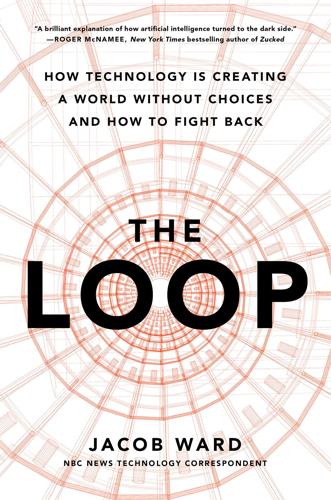
The Loop: How Technology Is Creating a World Without Choices and How to Fight Back
by
Jacob Ward
Published 25 Jan 2022
Spotting success and repeating the things that look like its ingredients is a trap we’ve fallen into before. Publishing and film studios already operate on this model, with humans, rather than algorithms, selecting likely hits and greenlighting sequels. But the tendency goes back a lot further than that. In a 1943 report for the Statistical Research Group,1 the Hungarian mathematician Abraham Wald sought to answer an essential question for the US military: What part of combat aircraft needed to be best protected by armor? The damage from explosive shells, flak, and machine-gun fire was obvious in returning planes: the wings and tails of aircraft were riddled with holes. Logically, those parts of the planes needed better protection.
…
Social Choice and Legitimacy: The Possibilities of Impossibility. New York: Cambridge University Press. doi: 10.1017/CBO9781139030885 9. Nou, J. (2015). Review of social choice and legitimacy. The New Rambler, https://newramblerreview.com/images/files/Jennifer_Nou-Review_Patty-and-Penn.pdf CHAPTER 9: THE LOOP 1. Mangel, M., Samaniego, F.J. (1984). Abraham Wald’s work on aircraft survivability. Journal of the American Statistical Association, 79(386):259–267. doi: 10.1080/01621459.1984.10478038 2. Tenbarge, K. (2021, May 16). Sorry Bella Poarch, this IS “Build a B*tch.” The Kids Aren’t Alright (newsletter on Substack), https://kids arentalright.substack.com/p/sorry-bella-poarch-this-is-build 3.
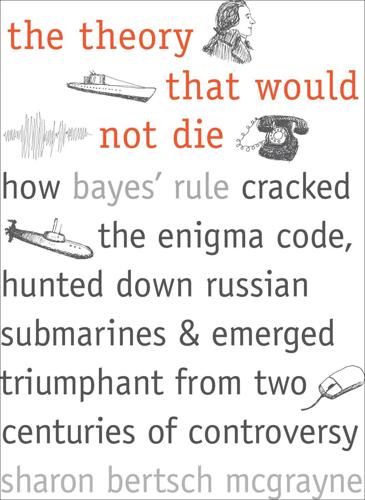
The Theory That Would Not Die: How Bayes' Rule Cracked the Enigma Code, Hunted Down Russian Submarines, and Emerged Triumphant From Two Centuries of Controversy
by
Sharon Bertsch McGrayne
Published 16 May 2011
In sequential analysis, once several tests or observations strongly cleared or condemned a case of, say, field rations or machine-gun ammunition, the tester could move on to the next box. This almost halved the number of tests required, and the use of logarithms massively simplified calculations by substituting addition for multiplication. Abraham Wald of Columbia University is generally credited with discovering sequential analysis for testing ammunition in the United States later during the war. But Good concluded that Turing had used it first and that Turing, Wald, and Barnard all deserved credit for discovering and applying it. Oddly enough, after the war Barnard would become a prominent anti-Bayesian.
…
But reading John von Neumann and Oskar Morgenstern’s book Game Theory (1944), he instinctively assessed how others would play in order to determine how he himself should compete: “In my naiveté, without any theory or anything like that. . . . [I began] assessing judgmental probability distributions. I slipped into being a subjectivist without realizing how radically I was behaving. That was the natural thing to do. No big deal.”11 When Raiffa gave a series of seminars on Abraham Wald’s new book Statistical Decision Functions, he discovered it was full of Bayesian decisionmaking rules for use in a frequentist framework. Independently of Turing and Barnard, Wald had discovered sequential analysis for testing ammunition while working with the Statistical Research Group in the Fire Control Division of the National Defense Research Committee.

Theory of Games and Economic Behavior: 60th Anniversary Commemorative Edition (Princeton Classic Editions)
by
John von Neumann
and
Oskar Morgenstern
Published 19 Mar 2007
So the addition of a new seminar was an event that raised the visibility of game theory considerably among the graduate students in the department and among the visitors to the institute. The speakers included von Neumann and Morgenstern, visitors to the institute such as Irving Kaplansky, Ky Fan, and David Bourgin, as well as outside visitors such as Abraham Wald, the Columbia statistician who had made significant connections between game theory and statistical inference. (Wald had done the review of the TGEB for Mathematical Reviews and had tutored Morgenstern in mathematics in Vienna.) More importantly it provided a forum for graduate students in mathematics who were working in this area to present new ideas.
…
Nevertheless, even during those years in the 1930’s in Vienna, I managed to read a lot of logic and set theory, e.g., Hilbert-Ackermann, Fraenkel, Hilbert-Bernays, Hahn, Hausdorff, etc. I also attempted to approach Kurt Gödel’s great work on undecidability, helped and guided by my friend Karl Menger. At the same time Abraham Wald, to whom I had been able to offer a position as statistician in my Institute, gave me special instruction in various fields of mathematics. In those years fall not only the exciting work of Wald on the Walrasian equations but also the publication of Menger’s great papers on the theory of returns [9, 1936] and the St.
…
In that paper I referred to Johnny’s model of the expanding economy, and I emphasized the fact that in economics one is confronted essentially with inequalities and not with equations. It is, as far as I know, the first mention of his paper anywhere, certainly in an economic periodical or book. Incidentally, in my paper there is also a strong reference to the fundamental work done by Abraham Wald (also in the 1930’s at Menger’s Colloquium) on the Walrasian system, a work again not taken up by Hicks, Johnny read my paper on Hicks carefully and was in full agreement with what I said. He even made one or two annotations to the manuscript. This paper on Hicks has been completely bypassed in the literature, perhaps due to the wartime conditions, perhaps due to its irreverent nature.
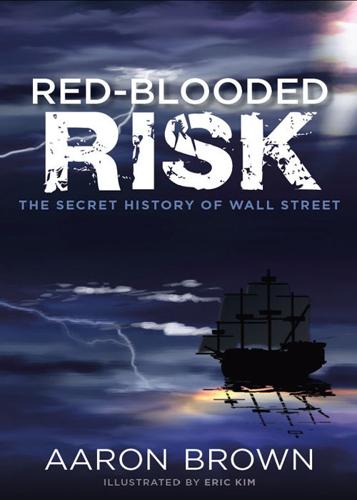
Red-Blooded Risk: The Secret History of Wall Street
by
Aaron Brown
and
Eric Kim
Published 10 Oct 2011
Anyway, the Air Force collected statistics on what parts of bombers suffered the most flak and shrapnel damage: leading edges took more than trailing edges, for example, and the underside took more hits than the rest of the plane. Obviously the places with the most frequent damage would benefit the most from armor. It sent the data to the great statistician Abraham Wald, asking him to indicate the areas where the armor would do the most good. Wald sent back a diagram that shocked the analysts. He put armor everywhere no damage had been recorded, and no armor on the places with most frequent damage. When Wald was asked why he put armor in places the bombers never took damage, he replied, “The bombers hit in those places never came back.”
…
If your interest is philosophy of statistics, with emphasis on practical implications, you can do no better than Jimmy Savage’s great work, The Foundations of Statistics. His son Sam wrote The Flaw of Averages: Why We Underestimate Risk in the Face of Uncertainty. Both books are readable without deep quantitative training, but Sam’s is the easier one to tackle. Two other classics are Bruno de Finetti’s Philosophical Lectures on Probability and Abraham Wald’s Statistical Decision Functions. These are a bit tougher going than the Savage works. For data analysis, The Jackknife, the Bootstrap, and Other Resampling Plans by Brad Efron is great. Also consider Exploratory Data Analysis by John Tukey. The magnum opus of statistical history is Steve Stigler’s The History of Statistics: The Measurement of Uncertainty before 1900.

How Markets Fail: The Logic of Economic Calamities
by
John Cassidy
Published 10 Nov 2009
Its members included the philosopher Moritz Schlick, the logicians Rudolf Carnap and Kurt Gödel, and the mathematician Karl Menger. Another member of this group was Karl Schlesinger, a wealthy businessman who had written an economics monograph that included an exposition of Walras’s model. Schlesinger didn’t have a solution to the existence problem, but in 1931 he took on as a math tutor Abraham Wald, a brilliant young Romanian Jew who had just obtained his doctorate at the University of Vienna under Menger’s supervision. Wald turned to Walras’s equations, and before long he had solved them. To do this, though, he was forced to introduce some simplifications, such as assuming that the price of each commodity depended only on the quantities it was produced in, and not on the quantities of competing goods.
…
It was also picked up in the United States, where the need for wartime planning and the influx of itinerant Europeans, many of them Jews fleeing the Nazis, had given a big boost to research in mathematical economics. Many of the European émigrés gravitated to the Cowles Foundation, where Koopmans was encouraging his colleagues to pursue the prewar work that Abraham Wald and von Neumann had done. Arrow was one of the Cowles scholars who took up the challenge. He had first come across the existence problem of Walrasian equilibrium when he was studying at Columbia. Harold Hotelling, his thesis adviser, hired as a research assistant Wald, who had recently arrived in the United States on a fellowship from the Cowles Foundation.
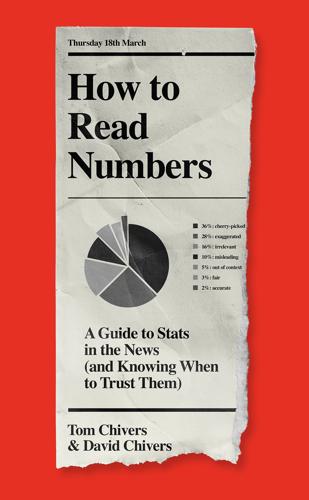
How to Read Numbers: A Guide to Statistics in the News (And Knowing When to Trust Them)
by
Tom Chivers
and
David Chivers
Published 18 Mar 2021
So, reasonably enough, they looked at where returning planes had been damaged. They noticed that the bullet and flak-shrapnel impacts were mainly seen on the wings and fuselage, and not the engines. They decided that they ought to reinforce the wings and fuselage with extra armour plating. A statistician, Abraham Wald, pointed out the problem with this.4 The Navy was looking at a particular subset of planes – those planes which had returned to the carrier. The planes which had been hit a lot on the fuselage and wings tended to have made it back to base successfully. Those that had been hit on the engines, meanwhile, had predominantly fallen into the sea and not been counted in the statistics.

Who Is Government?: The Untold Story of Public Service
by
Michael Lewis
Published 18 Mar 2025
Allied planes were coming back from raids over German-occupied Europe riddled with bullet holes. The damage was concentrated on their wings and fuselages. There was no evidence of damage to engines. Repair efforts were therefore directed toward wings and fuselages because that was obviously where the main damage was being sustained. Abraham Wald, a statistician, arrived from Columbia University, looked at the evidence and said, not so fast. The planes with the Swiss cheese damage to their wings and fuselages—those were the ones that were making it home. They were seeing no planes with damaged engines because those aircraft weren’t making it home.

Turing's Cathedral
by
George Dyson
Published 6 Mar 2012
“Cybernetics came into its own,” explained neurophysiologist Warren McCulloch, “when Julian Bigelow pointed out the fact that it was only information concerning the outcome of the previous act that had to return.”22 In 1943, Bigelow left MIT, reassigned by Warren Weaver to the NDRC Applied Mathematics Panel’s Statistical Research Group. Under the auspices of Columbia University, eighteen mathematicians and statisticians—including Jacob Wolfowitz, Harold Hotelling, George Stigler, Abraham Wald, and the future economist Milton Friedman—tackled a wide range of wartime problems, starting with the question of “whether it would be better to have eight 50 caliber machine guns on a fighter plane or four 20 millimeter guns.”23 Bigelow was brought in to help with an automatic bomb sight being developed for high-speed dive bombers trying to hit fixed targets on the ground: the debomber problem upside down.
…
One of Bigelow’s last assignments at the Statistical Research Group at Columbia had involved the reliability of munitions. “There had been a lot of accidental explosions of rocket propellant units on airplanes in which the explosion would take the wing off a plane,” he explains. “And this would happen in a very rare and erratic fashion. So we had some excellent people in statistics there, including no less than Abraham Wald, who founded sequential analysis while working with our group. Statistical thinking had become a part of my way of thinking about life.” It turned out that the most reliable tubes were those produced in the largest quantities—such as the 6J6. As Bigelow described it, “We learned that tube types sold at premium prices, and claimed to be especially made for long life, were often less reliable in regard to structural failures than ordinary tube types manufactured in larger production lots.”60 That higher quality did not require higher cost was not readily accepted, especially since IBM, who had used the 6J6 as the computing element in its popular model 604 electronic calculator, had recently established its own experimental tube production plant in Poughkeepsie, New York, to develop special computer-quality tubes at a much higher cost.
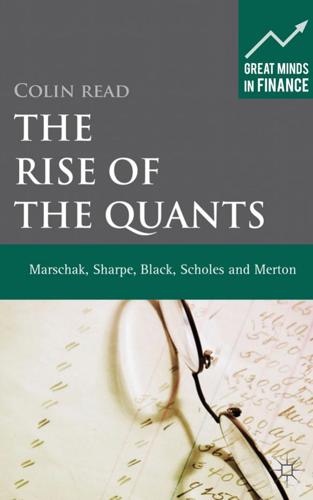
The Rise of the Quants: Marschak, Sharpe, Black, Scholes and Merton
by
Colin Read
Published 16 Jul 2012
That evening he began to try to solve the assignment, but found it unusually difficult. After a few days, he managed to solve the questions. When he handed in the “assignment,” Neyman was astounded. He helped Dantzig publish these great insights as his first publication. He was further recognized when the famous mathematician Abraham Wald separately solved the second problem years later.2 This scene was stylized and immortalized in the opening of the popular movie Good Will Hunting.3 In the year that Markowitz joined RAND and began working with Dantzig, Markowitz published the most influential 15 pages of his life in the March 1952 edition of the Journal of Finance.4 The article, simply entitled “Portfolio Selection,” defined Modern Portfolio Theory and was documented in the second volume of this series.
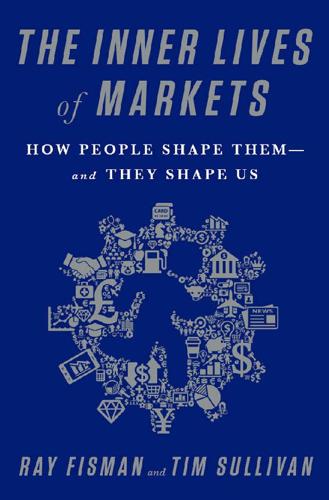
The Inner Lives of Markets: How People Shape Them—And They Shape Us
by
Tim Sullivan
Published 6 Jun 2016
Given the wants and desires of consumers on one side, and the resources of sellers on the other, a set of prices would arise whereby every seller could sell all he wanted and every buyer could similarly buy all she wished (given the prices that came to prevail in the market). That is, economists were aiming to demonstrate, in their newly sophisticated mathematical language, the conditions that would ensure the existence of a stable market economy. When Arrow spoke with one of his mentors at Columbia, the great statistician Abraham Wald, about this question of proving the existence of equilibrium, he was told “it is a very difficult issue”—as in, “too difficult for the likes of you.” That challenge helped spur Arrow, who went ahead and proved it anyway. The year 1951 had seen a major technical advance that made proof of existence far easier than Wald might have realized.
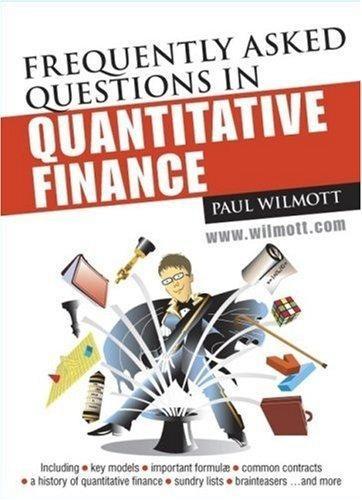
Frequently Asked Questions in Quantitative Finance
by
Paul Wilmott
Published 3 Jan 2007
Since hits on aircraft are going to be fairly uniformly distributed over all places that are accessible by gunfire one should place the reinforcements at precisely those places which appeared to be unharmed in the returning aircraft. They are the places where hits would be ‘fatal.’ This is a true Second World War story about the statistician Abraham Wald who was asked precisely this. Ages of three children A census taker goes to a house, a woman answers the door and says she has three children. The census taker asks their ages and she says that if you multiply their ages, the result is 36. He says he needs more info so she tells him that the total of their ages is the address of the building next door.
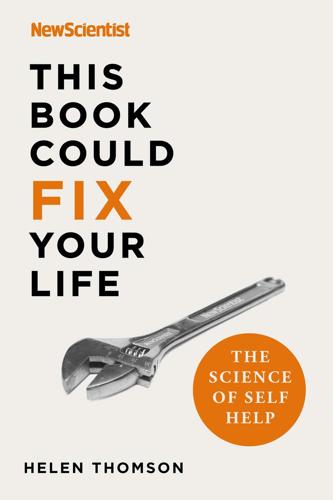
This Book Could Fix Your Life: The Science of Self Help
by
New Scientist
and
Helen Thomson
Published 7 Jan 2021
Survivorship bias is the Achilles heel of any self-help manual (by the way, it didn’t end well for Achilles, either): individual stories, or the bit of the story that presents itself to you or seems worth telling, is not the whole story. Another famous anecdote that eloquently demonstrates this is that of Abraham Wald, a statistician who was asked to work out how to protect planes better during the Second World War. His initial approach was to study those planes that returned from combat, thinking he would reinforce the areas where they had been hit the worst. Then he realised that the planes that could provide the best evidence were those that hadn’t made it back.

Know Thyself
by
Stephen M Fleming
Published 27 Apr 2021
The psychologist Josep Call offers the following summary: “I think that it is perhaps fair to say that the field has entered a sort of arms race in which increasingly elaborated non-metacognitive explanations are met with ever more sophisticated empirical evidence which in turn generate increasingly more complex non-metacognitive explanations.” Call (2012); Hampton (2001). 15. Beran et al. (2009). 16. Meyniel, Schlunegger, and Dehaene (2015). 17. The Hungarian mathematician Abraham Wald developed the theory of sequential analysis while working for the US government during World War II. Turing independently developed similar methods as part of the Banburismus process, which remained classified by the UK government until the 1980s. Hodges (1992); Wald (1945); Gold and Shadlen (2002). 18.

Other Pandemic: How QAnon Contaminated the World
by
James Ball
Published 19 Jul 2023
The pattern of the evidence was clear: there were far, far more bullet holes in the wings and tail fins of planes than in the engines or cockpits. The military’s preliminary conclusion was that this made the case for adding the extra plating to the wings and tail fins – but for a second opinion, they consulted with an expert panel of statisticians they had convened to help the war effort. One of them, Abraham Wald, had a startling conclusion: the military was completely wrong, and the armour needed to go where the bullet holes weren’t. What Wald had spotted and the US military had missed is that the planes which returned weren’t a full sample of planes that had gone out on bombing runs. The ones that were hit on the wings and tails returned to base, and lived to tell the tale.
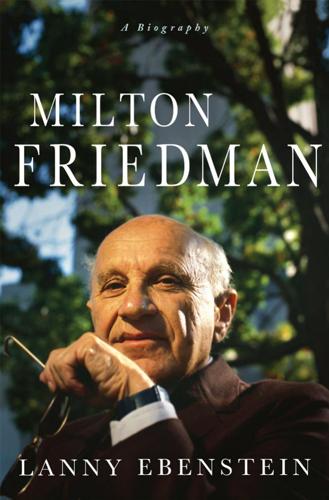
Milton Friedman: A Biography
by
Lanny Ebenstein
Published 23 Jan 2007
During that battle, Friedman went to Washington, D.C. to meet with several high-ranking army officers who had flown in from Europe to discuss optimal settings on proximity fuses for air bursts of artillery shells. The SRG’s work in sequential analysis was the most lasting of its endeavors. James Berger writes in The New Palgrave: A Dictionary of Economics: “The founder of sequential analysis is generally acknowledged to be Abraham Wald [another member of the SRG], with Milton Friedman and W. Allen Wallis providing substantial motivational and collaborative support.”10 Experiments can often be stopped when a certain amount of evidence is collected, but no one knows in advance when an experiment can be stopped because of the indeterminacy of the information to be gathered.
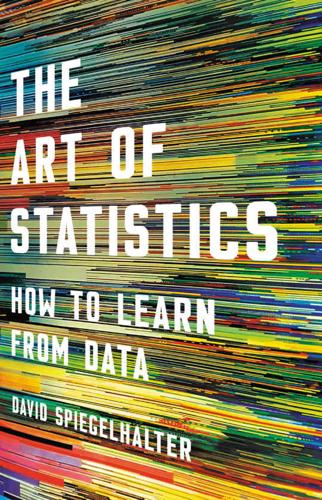
The Art of Statistics: How to Learn From Data
by
David Spiegelhalter
Published 2 Sep 2019
* Neyman and Pearson’s original theory included the idea of ‘accepting’ a null hypothesis, but this part of their theory is now ignored. * The P-value is one-sided since we are only interested in detecting increased mortality, and not decreased. The P-value is therefore the probability that a Poisson random variable with mean 22.5 would be at least 40, which from standard software is 0.004. * The statisticians were led by Abraham Wald in the US and George Barnard in the UK. Barnard was a delightful man, a pure mathematician (and Communist) before the war, when like many others he adapted his skills for statistical war work. He later went on to develop the official British Standard for condoms (BS 3704). * This was a remarkable achievement, given the collective noun for statisticians has been said to be a ‘variance’
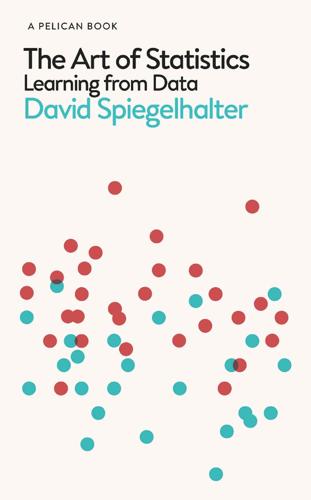
The Art of Statistics: Learning From Data
by
David Spiegelhalter
Published 14 Oct 2019
This is known as a paired t-test since it is based on the set of differences between pairs of numbers. 5 The exact chance of at least one trial being significant is 1 − (probability that both are non-significant) = 1 − 0.95 × 0.95 = 0.0975, which rounds to 0.10. 6 Neyman and Pearson’s original theory included the idea of ‘accepting’ a null hypothesis, but this part of their theory is now ignored. 7 The P-value is one-sided since we are only interested in detecting increased mortality, and not decreased. The P-value is therefore the probability that a Poisson random variable with mean 22.5 would be at least 40, which from standard software is 0.004. 8 The statisticians were led by Abraham Wald in the US and George Barnard in the UK. Barnard was a delightful man, a pure mathematician (and Communist) before the war, when like many others he adapted his skills for statistical war work. He later went on to develop the official British Standard for condoms (BS 3704). 9 This was a remarkable achievement, given the collective noun for statisticians has been said to be a ‘variance’.
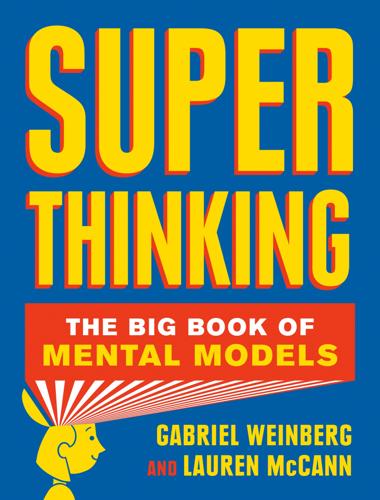
Super Thinking: The Big Book of Mental Models
by
Gabriel Weinberg
and
Lauren McCann
Published 17 Jun 2019
In World War II, naval researchers conducted a study of damaged aircraft that returned from missions, so that they could make suggestions as to how to bolster aircraft defenses for future missions. Looking at where these planes had been hit, they concluded that areas where they had taken the most damage should receive extra armor. However, statistician Abraham Wald noted that the study sampled only planes that had survived missions, and not the many planes that had been shot down. He therefore theorized the opposite conclusion, which turned out to be correct: that the areas with holes represented areas where aircraft could be shot and still return safely, whereas the areas without holes probably contained areas that, if hit, would cause the planes to go down.
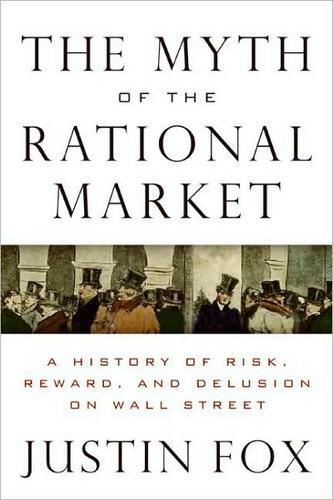
The Myth of the Rational Market: A History of Risk, Reward, and Delusion on Wall Street
by
Justin Fox
Published 29 May 2009
According to various Cowles Commission reports, attendees at the summer conferences, which ran from 1935 through 1940, included economists Ragnar Frisch, Trygve Haavelmo, Nicholas Kaldor, Oskar Lange, Wassily Leontief, Abba Lerner, Paul Samuelson, and Joseph Schumpeter; statistician-geneticist R. A. Fischer; statistical quality control pioneer Walter Shewhart; statisticians Corrado Gini (of “Gini coefficient” fame), Harold Hotelling, and Jacob Wolfowitz (who fathered a famous son named Paul); and mathematicians Karl Menger and Abraham Wald. 25. Alfred Cowles III, “Can Stock Market Forecasters Forecast?” Econometrica (July 1933): 324. 26. New York Times, Jan. 1, 1933, 7. 27. Alfred Cowles III, Herbert E. Jones, “Some A Posteriori Probabilities in Stock Market Action,” Econometrica (July 1937): 280–94. Holbrook Working was later to point out that even this meager result was misleadingly positive because of flaws in Cowles and Jones’s statistical technique. 28.
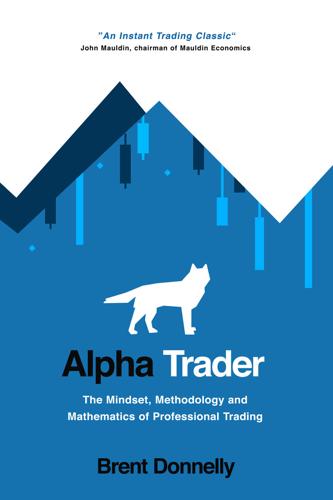
Alpha Trader
by
Brent Donnelly
Published 11 May 2021
The statisticians in the wartime Statistical Research Group received a diagram showing data something like this: By McGeddon - Own work, CC BY-SA 4.0 The intuitive or obvious answer is to reinforce the areas that are getting hit by enemy fire. The wings, fuselage, and tail look like natural places to add armor since they get shot up the most. But legendary mathematician Abraham Wald ignored the intuitive answer and thought more deeply. He thought to ask: “Why are there so many holes in the fuselage and wings, but no bullet holes in the engines?” This is like asking: why are there so many ER patients with gunshot wounds to the arm but so few with gunshot wounds to the heart, even though both sections of the human body are in a similar area?

The Art of Computer Programming
by
Donald Ervin Knuth
Published 15 Jan 2001
Math. 50 A928), 535- 552] suggested weakening von Mises's definition by substituting what he called "admissible numbers" (or Bernoulli sequences). These are equivalent to oo- distributed [0.. 1) sequences in which all entries Un have been replaced by 1 if Un < p or by 0 if Un > p, for a given probability p. Thus Copeland was essentially suggesting a return to Definition Rl. Then Abraham Wald showed that it is not necessary to weaken von Mises's definition so drastically, and he proposed substituting a countable set of subsequence rules. In an important paper [Ergebnisse eines math. Kolloquiums 8 (Vienna: 1937), 38-72], Wald essentially proved Theorem W, although he made the erroneous assertion that 178 RANDOM NUMBERS 3.5 the sequence constructed by Algorithm W also satisfies the stronger condition that Pr(t/n e A) = measure of A, for all Lebesgue measurable A C [0.. 1).